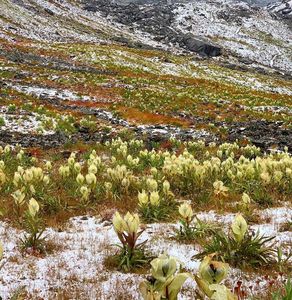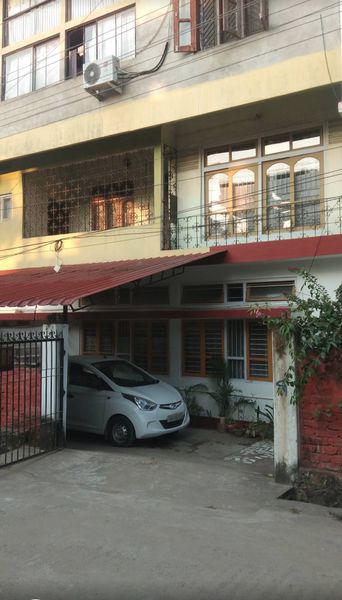Everything You Need to Know About the Nanda Devi Biosphere Reserve
 Ashish Rawat
25 Jul, 2025
7 mins read
117
Ashish Rawat
25 Jul, 2025
7 mins read
117

Nanda Devi Biosphere Reserve is one of the most beautiful and ecologically rich areas in India. Located in the Himalayan region of Uttarakhand, it is named after the second-highest mountain in India, Nanda Devi. This biosphere reserve is a part of the UNESCO World Network of Biosphere Reserves and attracts nature lovers, trekkers, and researchers from across the world.
Location and Geography
Nanda Devi Biosphere Reserve is situated in the Chamoli district of Uttarakhand in northern India. It covers an area of around 2,236 square kilometers and includes the Nanda Devi National Park and Valley of Flowers National Park. The reserve lies at altitudes ranging from 1,800 meters to more than 7,800 meters above sea level. The terrain is rugged with steep valleys, snow-covered peaks, glaciers, and alpine meadows.
The region is surrounded by high Himalayan peaks such as Nanda Devi (7,816 m), Dunagiri, Trishul, and Kamet. The Rishi Ganga gorge, which cuts through the reserve, is one of the deepest gorges in India.
UNESCO World Heritage Site
Nanda Devi National Park, along with Valley of Flowers National Park, was declared a UNESCO World Heritage Site in 2005 under the category of natural heritage. This recognition was given for its exceptional natural beauty and the wide variety of rare and endangered plant and animal species found here.
Biodiversity and Flora
The Nanda Devi Biosphere Reserve is known for its rich biodiversity. It falls under the Himalayan biodiversity hotspot and is home to many unique plant species. The vegetation in the reserve changes with altitude. You can find alpine meadows, temperate forests, rhododendron shrubs, and high-altitude grasslands.
Some notable plant species found here include Brahma Kamal (the state flower of Uttarakhand), blue poppy, and many types of orchids and medicinal herbs. The Valley of Flowers, part of the reserve, blooms with hundreds of colorful flowers during the monsoon season, making it a major attraction.
Wildlife and Fauna
The reserve is also home to many endangered and rare animals. You might spot Himalayan musk deer, snow leopard, bharal (blue sheep), Himalayan tahr, and serow. It also supports predators like Himalayan black bear and common leopard.
Bird lovers can enjoy the sight of over 100 species of birds including Himalayan monal, snow partridge, and golden eagle. The rich biodiversity of the area makes it an important center for ecological research and wildlife conservation.
Trekking and Adventure
Nanda Devi Biosphere Reserve is a favorite spot for trekking and adventure activities. While access to the inner sanctuary of the Nanda Devi National Park is restricted for conservation reasons, there are many trekking routes on the outer areas and in the Valley of Flowers.
Popular treks include:
- Valley of Flowers Trek
- Hemkund Sahib Trek
- Kuari Pass Trek
- Nanda Devi East Base Camp Trek
These treks offer stunning views of the Himalayas, dense forests, and a chance to experience the local culture of the region.
Cultural Significance
The area around the Nanda Devi Biosphere Reserve is inhabited by local communities like the Bhotiya tribes, who have lived in harmony with nature for generations. The mountain Nanda Devi is considered sacred and holds religious importance among the locals.
Traditional festivals, rituals, and the lifestyle of these communities add a cultural richness to the natural beauty of the region. Eco-tourism efforts are being promoted to ensure that tourism supports local livelihoods without harming the environment.
Best Time to Visit
The best time to visit the Nanda Devi Biosphere Reserve is from May to October. During this period, the weather is pleasant and the Valley of Flowers is in full bloom from July to early September. Winters are harsh with heavy snowfall, and most of the area remains inaccessible.
How to Reach
By Air: The nearest airport is Jolly Grant Airport in Dehradun, around 295 km from Joshimath, the nearest town to the reserve.
By Train: The nearest railway station is Rishikesh, from where one can travel by road to Joshimath.
By Road: Joshimath is well connected by road to other major cities of Uttarakhand. From there, you can travel further on foot or by mule depending on the trekking route.
Conservation Efforts
The reserve is strictly protected to maintain its fragile ecosystem. Entry to the inner core of Nanda Devi National Park is restricted, and only researchers and forest officials are allowed with special permission. Tourism is allowed only in the buffer zones and the Valley of Flowers to minimize human impact.
Efforts are also being made to involve local communities in conservation and sustainable tourism. These include promoting home stays, using eco-friendly practices, and creating awareness about the importance of preserving the environment.
Conclusion
Nanda Devi Biosphere Reserve is a perfect example of nature’s beauty and biodiversity. From high mountains to colorful valleys, and rare wildlife to spiritual connections, it offers a complete experience for nature lovers and adventure seekers. While planning a visit, it is important to respect the rules and the natural balance of the area so that this pristine environment can be preserved for future generations.
Written By:
Ashish Rawat



Hotels at your convenience
Now choose your stay according to your preference. From finding a place for your dream destination or a mere weekend getaway to business accommodations or brief stay, we have got you covered. Explore hotels as per your mood.


